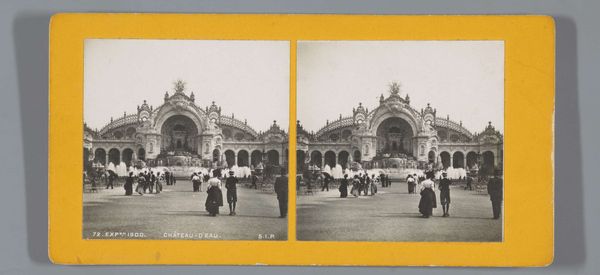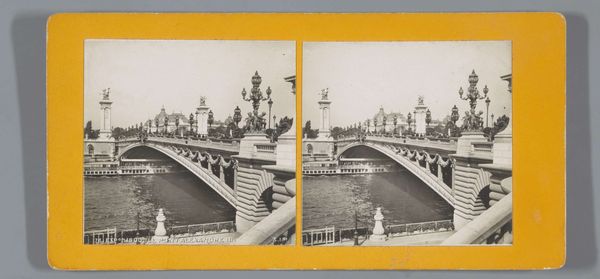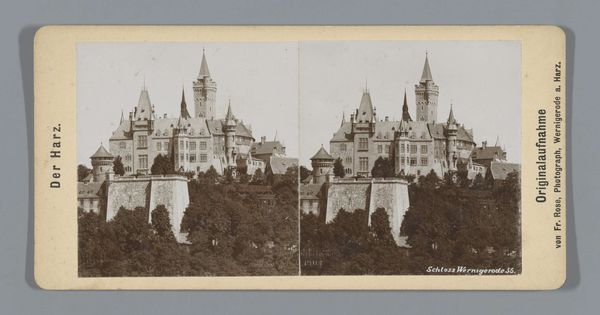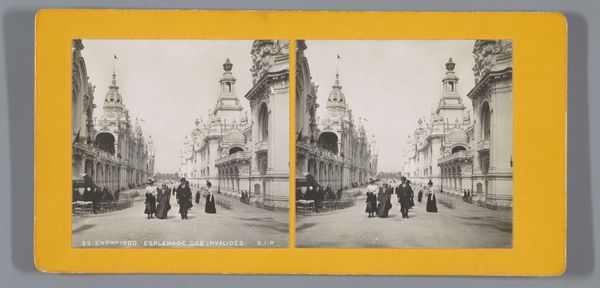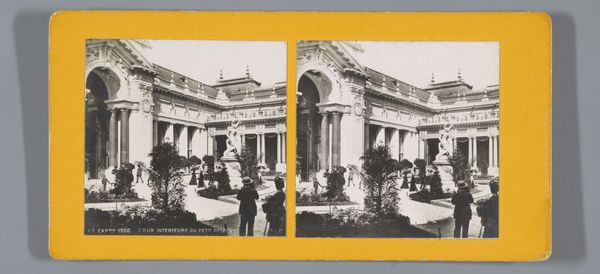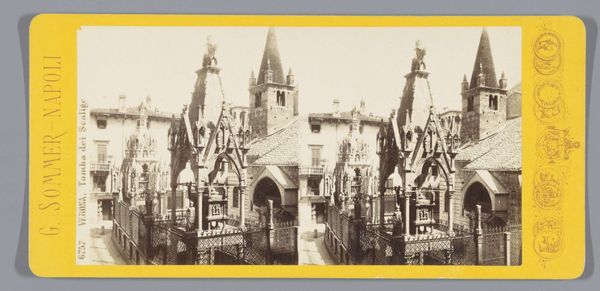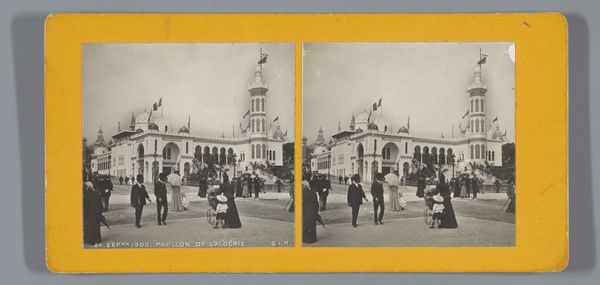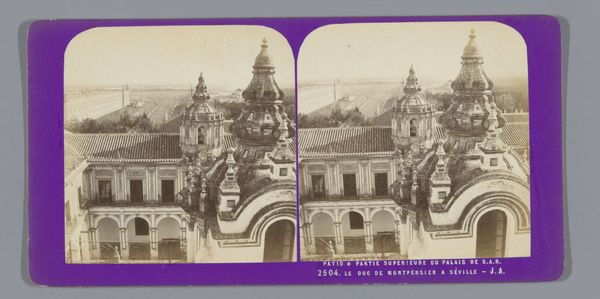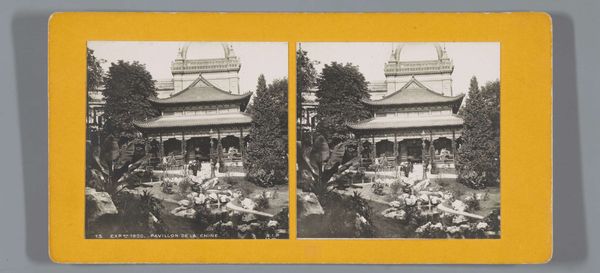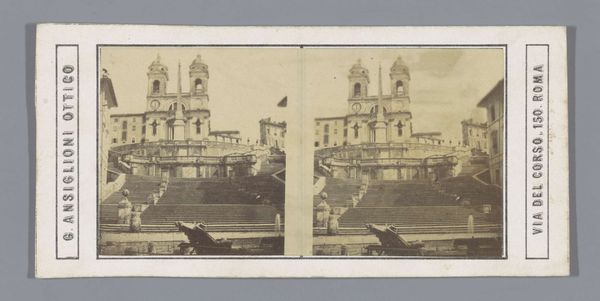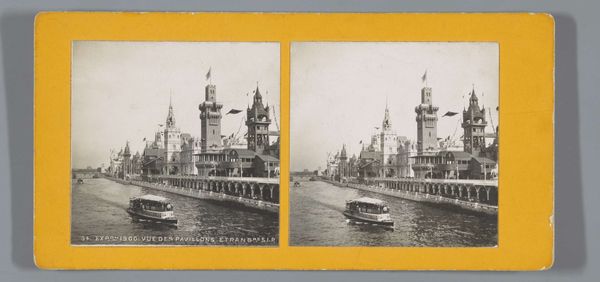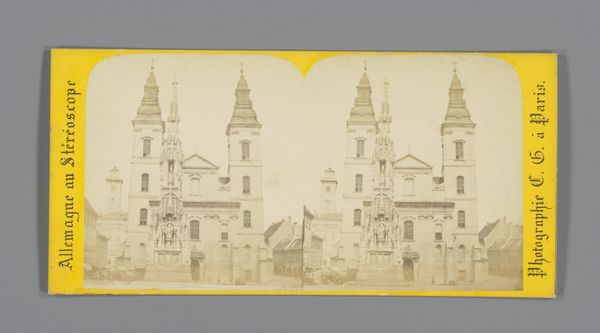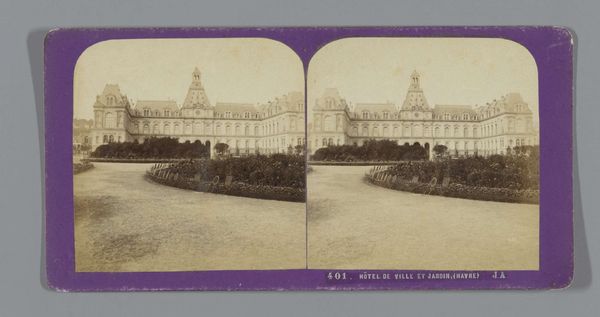
print, photography, architecture
# print
#
photography
#
ancient-mediterranean
#
orientalism
#
cityscape
#
architecture
Dimensions: height 87 mm, width 176 mm
Copyright: Rijks Museum: Open Domain
Editor: So this is a stereoscopic print called "Russian Pavilion at the 1900 World Exhibition." It’s interesting seeing it like this, almost 3D. The architecture is so ornate, but I wonder, what story does this image really tell about that time? Curator: It's a seemingly straightforward architectural record, yes, but let’s dig a little deeper into its material production. Think about the World Exhibition itself. These events were key drivers of industrial production and global commodity flows. Consider who produced this print and for what audience? Editor: I see, the print itself becomes part of the story. It wasn’t just documenting; it was part of the entire system. Was it meant for mass consumption? Curator: Precisely! It's not high art; it's a mass-produced object intended for popular consumption. We can consider it part of the visual propaganda celebrating progress and empire, easily bought as a souvenir. The Russian pavilion would have used laborers and raw materials for construction, which links this image directly to global markets. What can this cheap reproduction tell us about access and control? Editor: So, rather than just looking at the beauty of the architecture, we can use it to uncover questions around industrialization, consumption, and even politics! It is part of material culture. Curator: Exactly. The materials, the means of production, the very distribution – they all shape our understanding of that historical moment, and our consumption of it, even now. Editor: I never considered how much an everyday print could reveal. Thanks!
Comments
No comments
Be the first to comment and join the conversation on the ultimate creative platform.
